 Primorsky
Krai Primorsky
Krai |
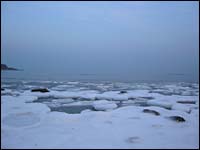
The Russian Far East contains many remarkable
places of unspoiled beauty. Located in the extreme
southeastern corner of Russia, Primorye means
the maritime province where the taiga meets the
Sea of Japan. An area about the size of France,
Primoye shares the same latitudes as the Pacific
Northwest of the United States from (42 to 48).
It offers beach and coastal resources, ideal geopolitical
location in North Asia, and unspoiled natural
areas of forests, lakes, and rivers. A bustling
international city, Vladivostok provides reliable
and safe access by rail, air, and sea. It lies
at the end of the Trans Siberian railroad, 9,000
kilometres from Moscow. Located near international
borders with China, Korea, and Japan, the area
offers unique tourism opportunities in North Asia.
Primorsky krai lies at the boundaries of two global
bioregions. Here the Amur-Sakhalin boreal biome
meets the Manchurian/Asian biome to create one
of the world's greatest areas of bio-diversity.
It contains a unique forest of northern confers
and semi-tropical deciduous trees of oak, maple,
and ash. It is home to Siberian tigers, leopards,
ginseng, rare birds, lotus, and pristine habitats
long since vanished from the rest of North Asia.
The region includes rugged mountains, stunning
beaches, spectacular coastline, and clean, clear
rivers with abundant fish.
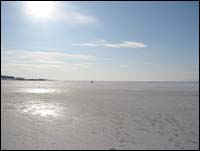
 The
Central Sikhote-Alin The
Central Sikhote-Alin
|
Mountain range dominates Primorsky south, these
rugged mountains average 800 meters with plateaus
up 1800 meters in height. Siberian tigers roam mountain
forests along with leopard, lynx, sable, bear and
wolf. The unique forest structure and the rugged
coastline on the Sea of Japan provide an ecosystem
unique in the entire world. krai. Running mostly
north
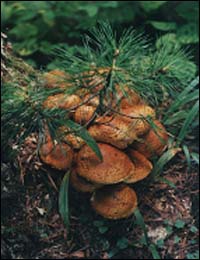
Forests cover about 83% of the landscape and include
a mixture of conifer and deciduous species. Korean
Pine represents the main forest type and it provides
the main habitat for tigers and leopards. In addition
to Pineas korensis, these mixed forests include
larch, fir, spruce, birches, and maples. Manchurian
oak forests dominate coastline and southern areas
and spruce-fir boreal forests grow farther north
and along mountain ridges. River valleys provide
diverse habitats for many types of softwood including
willow, maple, Manchurian Ash, and elm.
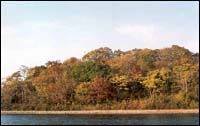
Forests cover about 83% of the landscape and include
a mixture of conifer and deciduous species. Korean
Pine represents the main forest type and it provides
the main habitat for tigers and leopards. In addition
to Pineas korensis, these mixed forests include
larch, fir, spruce, birches, and maples. Manchurian
oak forests dominate coastline and southern areas
and spruce-fir boreal forests grow farther north
and along mountain ridges.
|
River valleys provide diverse habitats for many
types of softwood including willow, maple, Manchurian
Ash, and elm.
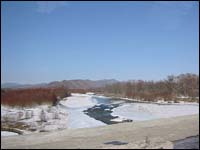
An east-west river system drains the Sikhote-Alin
mountain range and includes short, fast rivers
flowing into the Sea of Japan (Kievka, Samarga,
and Kema) and longer flowing rivers draining west
into the Ussuri River and Lake Khanka (Bolshaya
Ussurka-Armu and Arsenjevka). Mostly unspoiled
by contamination and development, these rivers
provide abundant fish and rare fish resources.
Over 100 freshwater species live here including
popular sport fish such as taimen, cherry salmon,
trout, grayling and pike. Clean, fast moving rivers
provide many opportunities for rafting and hiking
to waterfalls.
 Along the coast
Along the coast |
Wetlands support over 300 bird species; of which
over 30 of are listed as globally threatened. These
wetlands provide critical staging sites on the North
Asian flyway for such rare birds as Red-Crowned
crane and White-naped crane. Offshore, over 100,000
seabirds breed on about 30 small islands extending
south of Vladivostok to the Korean border. Globally
threatened raptors such as golden eagle and White-tailed
Sea eagles' winter along the coast.
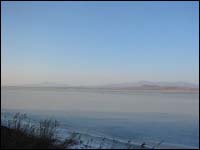
The coastal ecosystem includes many shallow inlets
along Peter the Great Bay, which serve as spawning
and rearing grounds for fish. Three species of whale
migrate through the area and Peter the Great Bay
contains over 2,000 species of marine invertebrates
and 290 species of fish.
Due to the genetic overlap of two biomes and the
fact that the area escaped glaciation during the
last ice age, Primorye contains many endemic plants
and those with medicinal value, such as ginseng.
Other important food and medicinal plants include,
Korean Pine nuts, eleutheroccus, mushrooms, and
berries. Sikhote-Alin forests also produce large
amounts of fur, fish, meat, and honey.
 Southern Primorsky krai
Southern Primorsky krai
|
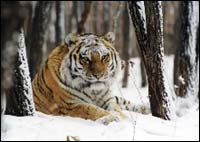
Contains more Russian Red Data Book species than
any other part of the Russian Far East. Endangered
species include:
· Amur leopard. The most northerly race of
leopard, it is listed on Appendix I of CITIES. A
critically endangered species on the Russian/Korean
border, the Amur leopard is down to about 25 to
40 individuals in the most recent census.
· Amur tiger. As the largest of the five
remaining sub-species of tiger, Pantherica altaica
tigris is the world's largest predator. Large males
consume about 3.2 tons of meat each year from the
populations of boar, deer, and other ungulates that
live in these rich forests. The latest census estimates
about 330-370 tigers remain in Russia. Largely poached
for use in Chinese medicines, Siberian tiger is
listed as Appendix I of CITES.
· Ginseng. Originally distributed across
China, North Korea, and Russia, natural ginseng
only remains in Primorsky and Khabarovsky krais.
Population ranges include the southern Sikhote-Alin
Mountains and the Laoyeling Moutains along the Primorky,
Russia/Jilin, China border. |

